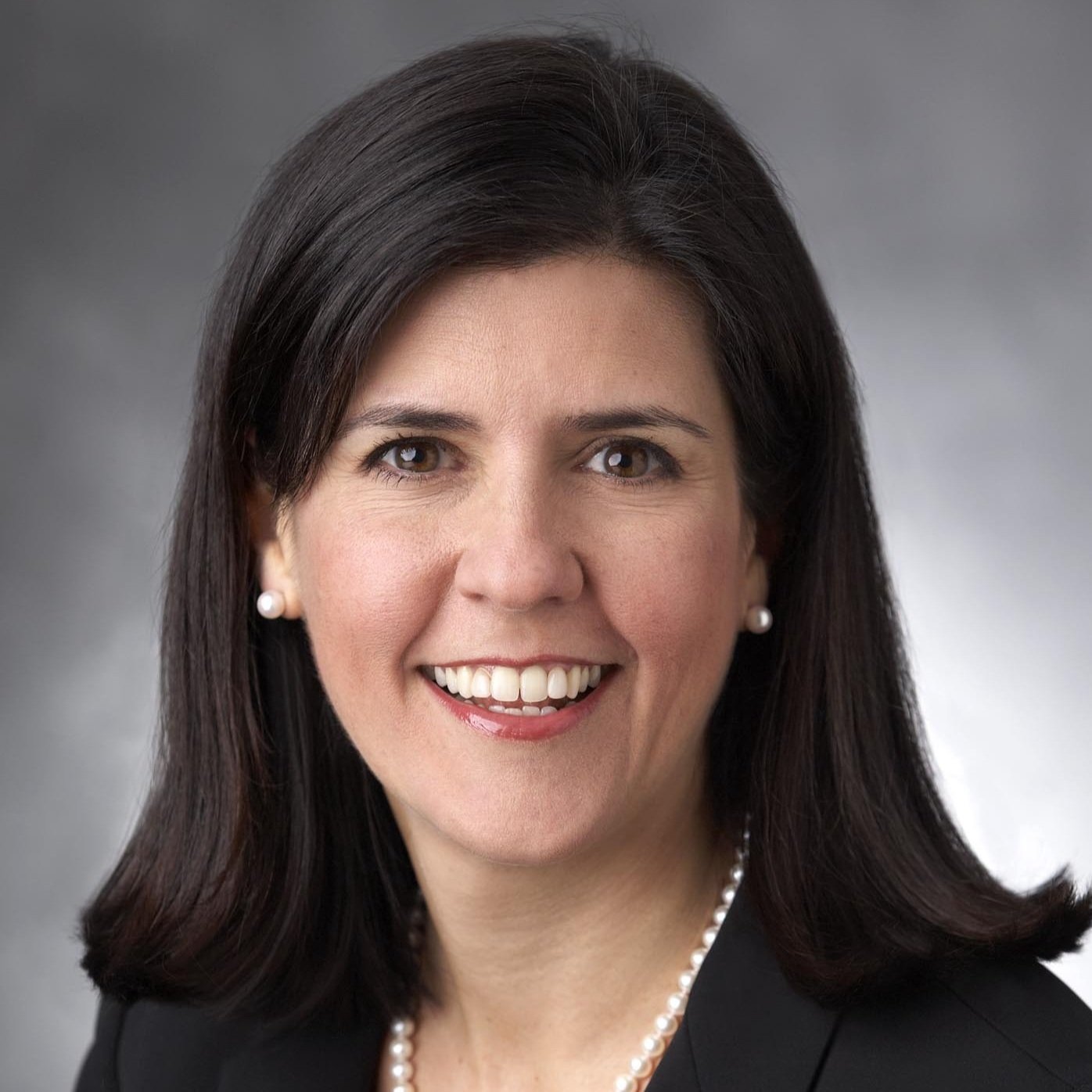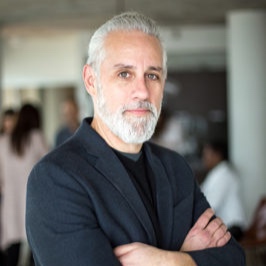25 years in CSR tech: Hard-won advice from an industry insider
Chris Battles shares insights from his two and a half decades developing and implementing technology for CSR programs.

25 years in CSR tech: Hard-won advice from an industry insider
21:48 MINChris Battles explores how technology is unlocking a new level of employee engagement in CSR.
Description
This episode of Impact Audio features Chris Battles, impact engineer & CSR software architect at Elwern Associates, as he shares insights from his two and half decades developing and implementing technology for CSR programs.
He covers:
Three things successful CSR programs all have in common
The key to engaging employees in today’s distributed landscape
How AI and technology unlock deeper employee engagement
Guests

Chris Battles
Chris Battles began his career in Corporate Social Responsibility (CSR) 26 years ago as a member of the founding team at CyberGrants. He helped grow the organization from the world's first online CSR solution to a company, now part of Bonterra, that supports 50% of the Fortune 100 and facilitates over $6B worldwide annually. During his time there, Chris created CyberGrants FrontDoor, consolidating and optimizing online activities from over a thousand online portals into a single secure location for nonprofits. He also architected CyberGrants Disbursement Solution, enabling companies to outsource payment of gifts, matches, and grants through a donor-advised fund administered by CyberGrants. Chris is currently an Impact Engineer and CSR Software Architect at Elwern Associates. Learn more about Chris at linkedin.com/in/chrisbattles

Sam Caplan
Sam Caplan is the Vice President of Social Impact at Submittable, a platform that foundations, governments, nonprofits, and other changemakers use to launch, manage, and measure impactful granting and CSR programs. Inspired by the amazing work performed by practitioners of all stripes, Sam strives to help them achieve their missions through better, more effective software.
Sam formerly served as founder of New Spark Strategy, Chief Information Officer at the Walton Family Foundation, and head of technology at the Walmart Foundation. He consults, advises, and writes on social impact technology, strategy, and innovation.
Connect with or follow Sam on Linkedin, listen to his podcast Impact Audio, and subscribe to his bi-weekly newsletter The Review.
Transcript
Episode Notes:
Learn more about how Submittable is changing the employee giving experience
Check out the survey results from charities.org
Dig into the latest CECP report
Learn more about Peter Drucker
Dive deeper into social impact data standardization
Learn more about AI in the social impact space
Transcript
Most companies have a lot of practice thinking about who they build their products and services for. They know how to zero in on the right audience and how to create something this audience wants and needs.
If a company can't do this well, odds are they fail. It's cutthroat, like corporate natural selection.
In contrast, when it comes to CSR, most companies don't have a clear picture of who their programs are really for.
This lack of clarity has made it hard for them to create initiatives and get results. The problem is, when CSR programs aren't designed with the right stakeholders in mind, they often work against the very goals they aim to achieve.
This looks like employee engagement programs that don't resonate with employees, or community investment initiatives that don't move the needle for nonprofits. Technology plays a really big role here, because if CSR software isn't designed to empower the right people, it can perpetuate the wrong dynamics between employees and employers, and corporations and nonprofits.
Luckily, over the last few years, there's been a reckoning in CSR. Teams are getting more strategic, and technology is catching up fast.
Welcome to Impact Audio. I'm Sam Kaplan, Vice President of Social Impact at Submittable. Today, I sit down with one of my oldest friends in CSR, Chris Battles, an impact engineer and CSR software architect at Elwer and Associates. Chris was hired as employee number two at CyberGrants in nineteen ninety eight, and he spent more than twenty five years helping to shape the technology behind corporate philanthropy and employee giving and volunteering programs. This experience gives him a really unique perspective on both the history and the future of CSR. He's someone who's seen it all.
Back when I first joined CyberGrants, we were really trying to recreate offline processes. So back then, everything was really paper based. So we're trying to recreate paper based grants forms. We're trying to recreate paper based matching gift forms only in this new thing called a web browser that exists on something called the Internet.
Everything was super, super transactional, to use a term that might be a little bit inflammatory. It was a lot like an ATM. We would have users, so it could be charities looking for support, or it could be employees looking for a matching gift, basically just approaching a company and saying, hey, I'd like to support this particular charity, I'd like to support this particular program, and there really wasn't much vetting going on in terms of what the money was going to be used for. It really was just an opportunity to really lower taxes with donations for the corporations.
Engagement might have been a side goal, but at that point the experience was not what we would call, at least I would call employee engagement. But round about maybe like five or six years into my career, the early aughts, CSR did become what I would say is much more strategic.
Eventually funders realized that they could look for a return on their investment by directing their donations towards outcomes that they're looking to see in the community, so they could ultimately be perceived as what we know today as good corporate citizens. They're also looking to comply with regulations, so things like watch lists and CRA compliance and Patriot Act and things like that, to make sure that they're riding the rails of being good corporate citizens. But again, at this point, they're finally turning a corner and realizing that they can drive both desired change in the community and hopefully create a pipeline of future employees and perhaps advocates.
And then I would say more recently, CSR has ultimately become essential. So it went from the ATM model to being strategic and then ultimately today essential. Right? So CSR is the secret sauce in a corporation's ability to attract and retain and engage both employees and customers and compete in this competition for eyeballs and attention.
You know, stories in the community will go a really, really long way. It also represents an opportunity for them to align both vendors and partners in the same direction by talking about goals and ultimately what the company is trying to achieve.
Really what we're doing today is looking for opportunities to invest in an employee's health and their career by using techniques such as listening very closely and customizing their programs and reacting in real time as best we can to their needs.
With many corporations focusing on employee well-being, CSR and HR professionals are bumping up against the realities of trying to engage today's workforce. The old playbook just isn't going to cut it.
First off, I would say it's really, really hard to engage today's workforce. Right? So many, many users today are going to be remote or mobile, or sometimes we call them deskless, right? So the natural inclinations that we had years ago, they're just not going to play.
If you did a program a certain way five years ago, you're going to have to adjust your perspective to accommodate the fact that not everybody sits behind a desk all day. You're going to have users that are going to expect to be able to engage on their programs on their phone or in Slack or Teams or things like that. Another really big obstacle, of course, is measurement, right? We need to be able to measure the impact of our programs and to do it in transparent fashion.
We have all sorts of stakeholders that are looking over our shoulder and they want to make sure that these investments are ultimately being driven towards the corporate goals. Ideally, you're going to be able to draw causal connections between these programs that we're trying to promote and these outcomes that our corporations are really looking for. And I think the last thing that's really a challenge is navigating just the complex regulatory space. It's constantly evolving and if you make a misstep there could be really, really severe penalties for your program.
So keeping tabs on that is certainly a challenge.
For many of the people running CSR programs, one question looms particularly large. According to a recent survey from charities dot org, seventy one percent of employees say they want a culture supportive of giving and volunteering. But the latest CECP report shows a nineteen point four percent participation rate for matching gift programs.
If employees want opportunities to donate and volunteer, why don't more of them participate?
So I think there's a few reasons to look at here, and I'll just give you a couple of them. The first of which is, of course, just time constraints, right? So employees today are super busy. We're asking them to take on more and more responsibilities, and they just may not have the time between their actual work, what we're tasking them to do to participate in the program.
I think another issue is sometimes the value of the program is just not clear to employees as it's being presented to them. So each employee is ultimately an individual. They themselves are going to have different things that they're looking to engage in, and if we're not careful, they're not going to understand the benefits of participating or really see how this program connects to their work and how their efforts connect to the company's broader mission. So they may be asking themselves, why would I take the time to take a survey or complete an online course or volunteer with my coworkers if I don't know how this is actually adding up to the big picture?
And then I think a third problem that we have today is we have just inconvenient or uninteresting activities in the programs that we're putting in front of the users, right? So each of these users are completely unique. They're going to have things that really sing to them, and if we try a one size fits all approach, they're going to find things to be just really, really boring or irrelevant to interests. So I would say, in summary, we've had this classic thinking of expecting employees to come to the program, and it really, really needs to be the other way around.
From his vantage, Chris has had a unique view into the things that set the best CSR and employee engagement programs apart from the rest. The companies getting it right have a few specific characteristics in common.
So I'm not normally one to name names, but I'm quite happy to give advice.
Again, I did not go to school for these things, but I'll give you a couple of tips of things that I've learned observing some of the best programs out there.
I'll tell you that not every program hits it right out of the park. A lot of times there's trial and error, but more often than not you'll see the most successful programs landing on a couple of best practices. The The first of which is one that I like to call, if you can't measure it, you can't manage it. And this is something I didn't invent this term. It's a term that was invented long ago by a gentleman by the name of Peter Drucker. If you're expecting to launch a program from day zero, I'm of the opinion that you need to have a plan to do some basic measurements. You don't have to have your final measurements in place, but you need to have a plan to measure the degree to which, for example, if it's employee engagement, the number of users that are on the platform, the number of organizations that are being supported, the funds flow that's going through the platform.
If those things are in place on day one, then you'll have an opportunity to gauge your progress and to make adjustments as the program matures.
The second thing that I'd like to say is what I like to call don't try to boil the ocean.
It's okay to start small and build up your programs.
You'll find that some of the best products out there are those that started off focusing on a really, really narrow use case. And I'm of the opinion that the most successful employee engagement programs will start small. Maybe you don't need to do everything under the sun. Maybe you want to focus on a particular geography or a particular type of transaction, and starting small will allow you to learn and to make those adjustments and to really make the most of your time and your resources.
Failure to prepare, that's the third item that I would say. Another way of talking about it is don't wait to buy an umbrella until it rains. This is really common in disaster relief, so when the bad things happen, you don't want to wait to have a partner in place. Working with vendors and program managers today, you'll find that very often they'll have tools in place for you so that if a disaster happens in the Far East, they'll have a partner in place, they'll have verbiage in place, they'll have imagery in place that you can bake right into your program.
When CSR works well, it's often because of the relationships at the heart of the work. To keep those relationships strong, there are some big gaps that we as a sector need to close.
I think there's probably at least three things that we need to look at in terms of gaps. A big problem today, I'm actually getting this directly from both nonprofits as well as CSR practitioners, is our need to standardize impact. It takes a tremendous amount of effort for a funder to come up with ways to measure impact.
It takes a terrific amount of effort for a charity to track all these various different ways of impact, and if we can find a way to standardize metrics such that when we're interacting with a charity, they know ahead of time this is how funders, regardless of who they are, will be looking to measure success. It will save everybody a lot of time, a lot of effort, and really allow us to focus on what it is that we're trying to do, which is of course driving impact to the community. I think another big gap that we need to close is remember that we need to listen very, very closely to all of our constituents. As mentioned earlier, I've been in the space for a while, but it really took me probably about fifteen or sixteen years before I sat down and I had a heart to heart conversation with nonprofit organizations.
Prior to that point, I was exclusively focused on listening to the needs of corporations and their donors, and I thought by making the corporations and the donors happy, donors meaning employees, that I was also servicing the nonprofits.
A funny story, when I finally sat down with charities, it was when CyberGrants started up nonprofit advisory board, And inside of this nonprofit advisory board, we have had a meeting in Chicago where we had all these amazing, wonderful logos appear. I'm talking about American Cancer. I'm talking about Ohio State. I'm talking about St.
Jude's. I'm talking about Feeding America, like all the biggest players in the space. We all sat around this table and talked about ways that we can make the philanthropic ecosystem that much more efficient, and I walked into that meeting thinking that I was actually making an impact, and I turned to the gentleman that was present from the American Cancer Society, and I said, I am doing you guys a terrific service. Every time my platform makes a matching gift contribution, I send you an email asking you to visit our website to confirm that contribution, and he looks at me with a wry smile, and he says, do you know what I do with all those emails?
And I said, well, I hope you open them. He says, no. I have I have a filter on my on my inbox, and it automatically deletes those.
And I said, Oh my gosh, why are you deleting all my emails? I work so hard to send these emails. And he says, Well, think about it from my perspective. I receive on a good day, hundreds of emails from you.
On a bad day, it's thousands of emails. What am I going do with each of those emails? And I said, Oh yeah, from your perspective, makes sense. I wouldn't be opening all those emails either.
Instead, what they were doing is they were visiting all these different disparate experiences on the CyberGrants platform to, to fish for matching gift, contributions that required, confirmation.
So at that point, I was well and truly put in my place. I learned to stop speaking and to start listening.
That became the advent of a project that we created called Frontdoor. Frontdoor, the first year of that program, its sole purpose was to give non profit organizations a singular login point to access the entire ecosystem of all the different funders on the on the platform.
We decided to call it front door for two very specific reasons, one of which is probably pretty apparent. It's It's one front door, but on a personal note, we call it front door because it represented a commitment to treat nonprofits as an equal stakeholder in philanthropy. Previously, we were really servicing them off the the back loading dock. We're sending money out the door, but in the go forward world, by treating them as equal partners, we're really welcoming them through the front door, where we're also bringing in our other key stakeholders. So those are our corporations and our employee donors as well.
When it comes to bringing employees through the front door of a CSR program, it's all about meeting them where they are in order to give them a positive experience.
We really, really need to meet employees in their flow of work and life. So if they are out in the field, if they're at their kids' bake sale, we need to be prepared to connect them, right? So this would mean having engagement available for them right on their phone. So if they wanted to make a contribution using cash that's stored in their employee giving wallet, they have an opportunity to do that.
Or if they're out in the field and they're at a volunteer event and they see, you know, everybody pulling together and marching across the finish line, then terrific. There's an opportunity to take a candid photo and to post it to a social feed with a hashtag, right? It really goes along with this idea of all these everyday moments, they can be transformed regardless of their size into these truly meaningful acts of philanthropy, right? It really, really does add up.
Technology plays a big role in giving employees a cohesive experience. Chris looks ahead at how the latest tech advancements will impact corporate philanthropy.
First and foremost, artificial intelligence AI, it'll allow us to personalize programs and experiences down to an individual level.
Heretofore, previously we're able to look at, okay, where is this user located from? What line of business are they from? But with artificial intelligence, we can actually ask the user some strategic questions about what they're interested in, what their skills are, and observe those patterns in the platform to see, okay, this is how we can adjust their experience to really push the things that are going to be most engaging to them. And what you see on the platform could be slightly different than what I see, but of course it's all going to be aligned towards those broader corporate goals.
I think another thing that we're going to see, of course, is standardized impact measurement and reporting. As I mentioned earlier, it's really, really expensive, both from a time and money perspective to create unique impact measurements for each charity and for each corporation. So standardization, I think, is going to be really, really important.
Our ability to measure impact, I think, is also something that it needs to start from the service level and extend all the way through towards those strategic analytics. I think that the software providers, they're going to be able to do a lot on their own platform, but I think that corporations are going to need to be prepared to bring that employee engagement data off of the vendor's platforms back into their own platform because that's where they have that full and complete picture, right? So within the vendors platforms, we can talk about this is a particular employee that was aligned to a particular cause, but we don't know all the other information about what they're doing within the company. So being able to bounce that up against the data that's within each of the funders' platforms, I think, is going to be really, really critical.
Technology can also help companies align their programs with their broader goals. It can provide deep insight into the experiences of individual employees.
The technology has really allowed program administrators to have terrific insight into what's really resonating with their users.
You'd be amazed at what you can do online today to look to see how a user is journeying through a platform, where they're landing, where they're really, really focusing and spending their time, and where they're getting frustrated and where they're leaving. We didn't have these tools even five years ago, but today we have all these awesome tools that really allow program administrators and software providers to fine tune these programs and to make sure that everything is hyper efficient as possible.
For CSR professionals who are trying to balance innovation with their day to day work, finding the right partners is key.
In closing, I would say in CSR today, we have a terrific responsibility. We are tasked with being practitioners of what I often talk to my teams about is the silence of excellence. And what I mean by that is we are required to make something that is naturally hard look easy. We need to make it look effortless, right?
But engagement is hard, right? Aligning engagement towards corporate goals and being able to tell that story, that creates the correlations between our efforts and and the company's ultimate goals. It it it's a challenge, but I can tell you a few things. You're not alone.
I think first and foremost you have folks such as myself and Sam and Submittable that are willing to be in the trenches with you and to help tackle these really, really difficult problems.
We as practitioners of CSR, we may not have all the solutions right off the top of our head, but we are terrific collaborators, and I assure you that we can find all these answers together.
If you're interested in how Submittable is reimagining the employee giving experience, check the show notes for info about our latest release. We're working on some exciting things, so stay tuned. That's all for me today. Thanks for tuning into Impact Audio, produced by your friends at Submittable. Until next time.




